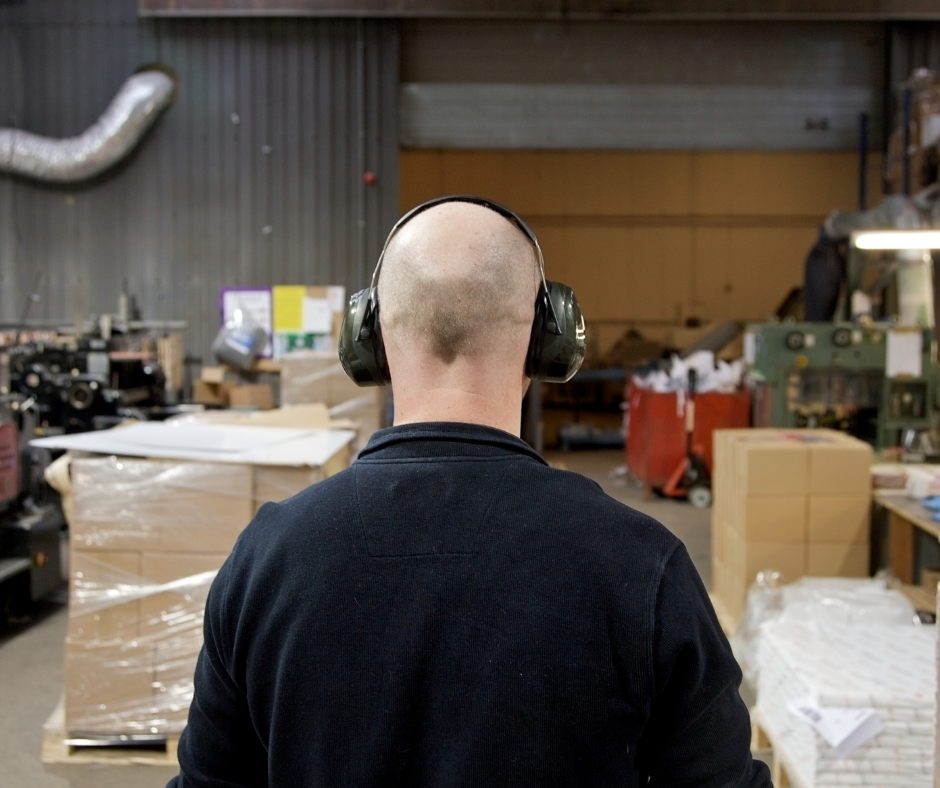Construction is a high-risk industry, both for injuries, and for ill health.
Controlling these risks is paramount in protecting your workforce, and there are many different aspects to be considered – keep reading for an overview of how you can achieve effective Health and Safety risk management on site.
1. Common Health and Safety Risks
 Its important to understand what potential risks you may be facing as you start to plan your site controls.
Its important to understand what potential risks you may be facing as you start to plan your site controls.
Common risks on site include:
- Asbestos exposure
- Hazardous substance exposure
- Manual handling
- Working at height
- Noise and vibration exposure
- Electricity
- Slips, trips, and falls
2. Assess the risks
In order to have proper control over construction health risks in your work place, you must first:
- Plan your health and safety strategy
- Identify any health hazards that relate to your work
- Assess how significant these hazards are
- Involve your workers in managing these risks
3. Control the risks
 In order for these plans to be effective, you must put what you have learned from your assessments into action. Your first step should be to prevent any risks you can before the work starts. For risks that cannot be eliminated, you must implement appropriate controls to mitigate them.
In order for these plans to be effective, you must put what you have learned from your assessments into action. Your first step should be to prevent any risks you can before the work starts. For risks that cannot be eliminated, you must implement appropriate controls to mitigate them.
Finally, you must ensure your workers receive sufficient training to make sure they are doing the job in the right way and using the controls correctly.
4. Review the risks and controls
To make sure your controls continue to be effective, you must:
- Supervise your workers to ensure working methods and controls are being followed correctly
- Maintain your controls – this may involve equipment maintenance, ensuring workers have the relevant skills, knowledge and experience to carry out the work safely, and having procedures for reporting in place
- Monitor the controls to ensure their effectiveness
- Act in a timely manner to fix any issues identified
5. Understand your legal duties
Everyone involved in construction projects, from clients and designers to workers and contractors, has a role to play in managing construction health risks.
Whatever your position, make sure you understand what your legal duties are and what actions you need to take to fulfil your role.
6. Monitor Exposure
 The severity of some health and safety risks, such as noise and vibration levels or dust, depends on the amount of exposure a worker receives. Exposure monitoring helps you to check exposure levels of your employees to make sure they do not exceed exposure limits, as well as giving you insight into the effectiveness of your controls and identifying any health surveillance needs.
The severity of some health and safety risks, such as noise and vibration levels or dust, depends on the amount of exposure a worker receives. Exposure monitoring helps you to check exposure levels of your employees to make sure they do not exceed exposure limits, as well as giving you insight into the effectiveness of your controls and identifying any health surveillance needs.
7. Monitor Health
Health surveillance is a way of detecting any harmful changes to someone’s health early on and identifying control measures that need improvement to help protect them.
In some cases, health surveillance is a legal requirement – such as when working with hazardous substances or in workplaces with high noise levels. In others, it is recommended as best practice, such as for roles where the risk of musculoskeletal disorders is high.
Make sure you know what surveillance is appropriate for risks in your workplace.
8. Consider the Working Environment
Even for the same type of job, you may find different risks present in different sites. Each site should be assessed individually – do not assume that controls that are sufficient in one place will be suitable for another.
9. Consider Both Immediate and Long-Term Consequences
 Many serious ill health conditions can take years to develop, and may be dismissed in favour of focusing on the immediate impact caused by injury. It is important to take equal care in protecting both the health and the safety of your workers.
Many serious ill health conditions can take years to develop, and may be dismissed in favour of focusing on the immediate impact caused by injury. It is important to take equal care in protecting both the health and the safety of your workers.
10. Remember What Poor Health and Safety Can Cost
Poor Health and Safety management can cost a business in a number of ways:
- Human cost – the effect of accidents, injuries and ill health on workers and their loved ones
- Financial cost – health and safety failures can cost a business both in lost time productivity and insurance costs
- Reputational cost – any HSE enforcement notices are recorded on the Public Register, which could affect your business’s reputation and cost you work

Asbestos Awareness, Manual Handling & Working at Height training courses are essential tools in protecting the health and safety of your employees. Make sure you don’t miss out on our 10% off deal on these courses, available until the end of October. Simply enter the code ‘construct10’ at checkout to save!
Read more Top 10 Tips blogs here.
To keep up to date with the latest health & safety news and advice, follow us on social media:
